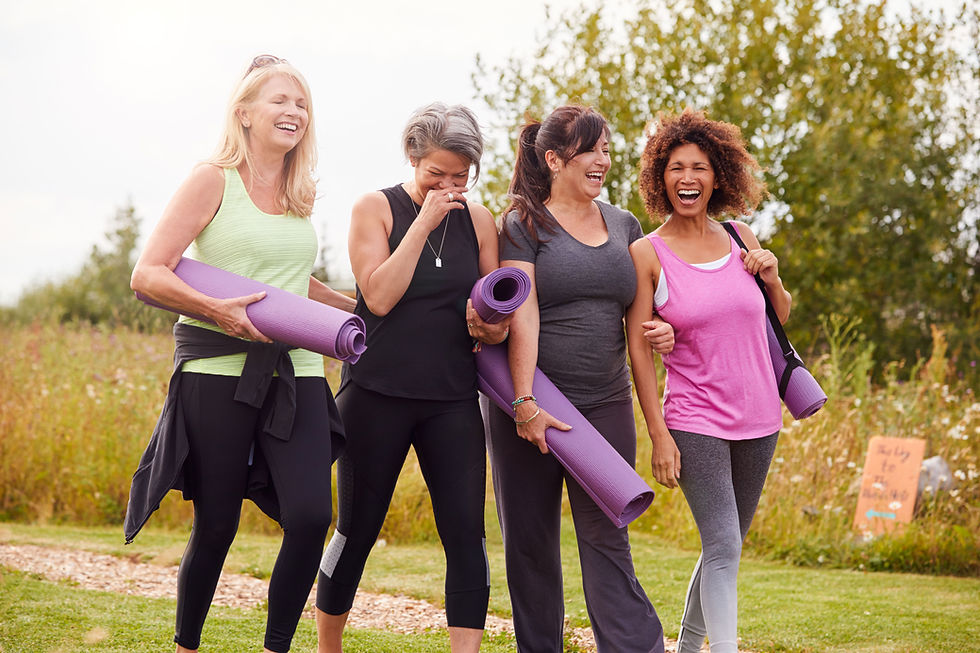Why Yin Yoga?
- lbanksunlimited
- Nov 30, 2021
- 3 min read
I only started to practice yin yoga around five years ago. To be honest I am not sure that there were any classes where I lived in the UK and if I managed to find the time to get to a yoga class, I wanted to feel like I had exercised. My default class was always hatha yoga - what people generally now term alignment or flow yoga.
As part of my first yoga training, we were sent off to other studios to try different types of yoga. In a carpeted room with a low ceiling, that was also dingy and dark with mirrors and super hot - I experienced my first Yin class. It wasn't love at first sight, more a dip of my big toe. I then tried a restorative class complete with bolsters and blankets in a space that was filled with light. I loved it, but it felt too comfy and I wasn't quite sure of the point!
I then tried a class that was 'sold' as something like 'mellow' and at some point during one of the long holds and the conscious breathing, I experienced both a shift in physical energy and a new found body awareness that had me hooked. The more I went, the more I noticed a transformation in both my body and mind. I had less pain in my hips, I slept better and I had less brain fog at 3pm. It was a while before I understood that;
By holding in a shape or pose for an extended period of time, the tissues of your body, deform, reform and become stronger, thicker and longer.

Yin poses are generally no different to those used in most yoga practices such as twists, forward folds and bridges. The different is that you may stay in the shape/pose for as long as 5 minutes whilst trying to maintain a stillness - that is not fidgeting or adjusting every few seconds - whilst using the breathe to maintain a level of connection with your body so that you can observe what is going on in the muscles, tendons, joints. So although it may appear to be a passive practice, there is often a lot going on.
Physically one of the benefits are greater range of motion in your joints. The joints are hydrated when put under pressure and when compressed - basically fluid flows to them. This stops the joints from fusing giving more mobility and better joint health. Yin also works on the fascia, this is so complex that I will cover this topic in another post!

Mentally, Yin aids concentration and helps build conscious awareness. This is all due to the activation of the parasympathetic nervous system. This is our rest, digest and repair mode. In very simplified terms this is what happens: you sit in what can often be a slightly uncomfortable pose or shape and then create further tension or stress in your body by stretching it. However, with careful use the breath to calm your body, a 'magic' happens in your mind. Your brain waves alter often going from beta - our decision making mind to alpha and theta.
Alpha brain waves are dominant during meditation and theta brain waves normally happens when we are asleep. It is said to be the gateway to learning, memory and intuition.
Emotionally, Yin does often brings things to the surface within the body. The stillness, the release in tense muscles and the deeper breathing promotes an awareness of what you are also feeling or not feeling. This can often show up as quite an uncomfortable feeling. However, this is not the purpose of a Yin yoga class.
Yin, ultimately helps regulate the central nervous system which can then change the stress response in our bodies. This in turn creates a healthy body and mind; a place of greater calm and more resilience.
In the 21st Century many of us live with stress toxicity and Yin offers us a way of counteracting the effects of this on our brains.

I teach Yin on Thursday mornings at The St Albans Community Centre if you fancy trying a class.
Lisa




Comments